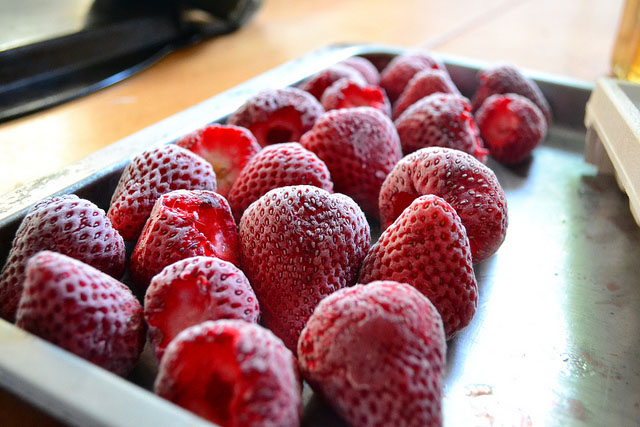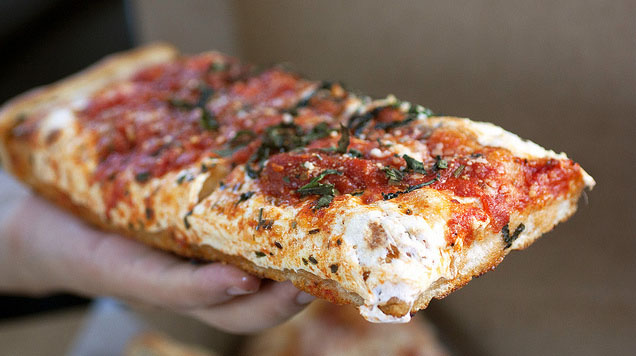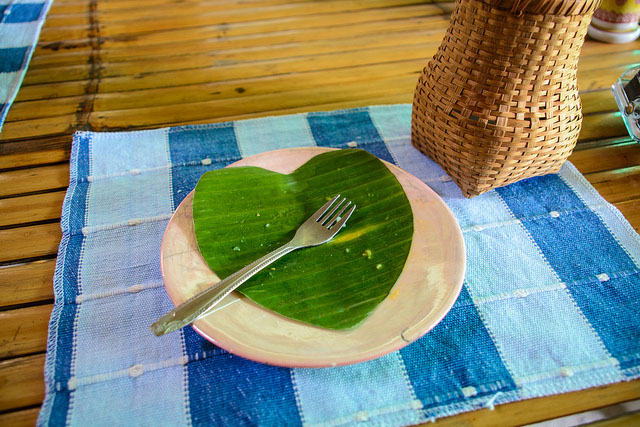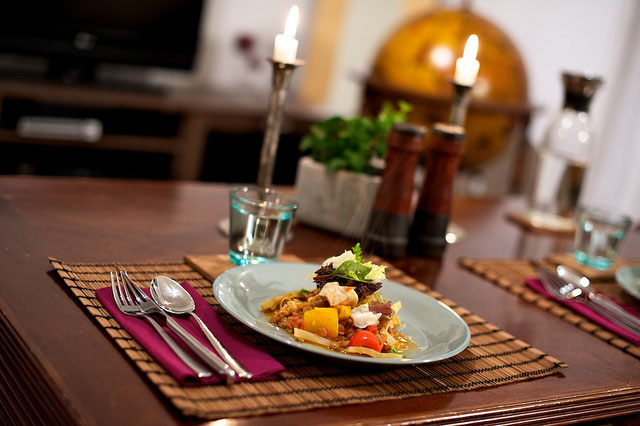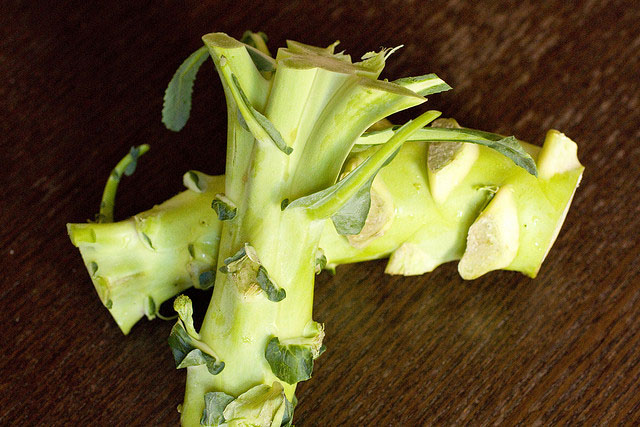Our staff thinks a lot about food waste at work, whether we’re researching data for the I Value Food campaign, helping events go zero waste or composting our coffee grounds in the break room. But even though we’re well versed on strategies to reduce food waste, we all still have to work hard each day to waste as little food as possible in our own lives. In order to find out what practices really work, we asked our staff to share the tips that have made the biggest difference in their own kitchens. Here’s what they said:
“I freeze foods I don’t have time to use.”
As a carb-counting vegan who loves experimenting in the kitchen, I usually end up with an excess of produce. Rather than watch it go bad before I can cook it up, I’ve found that most produce will freeze just fine. Blanching vegetables prior to freezing keeps them in a good condition for cooking while freezing raw is perfect for anything you can throw into a smoothie. You would be surprised at how many vegetables you can fit into a smoothie without tasting them at all – especially if you throw in a few frozen banana slices or berries! —Katy, Office Manager
“We learned to love leftovers.”
We love pizza in our house, but we have a combination of crazy food allergies combined with picky eaters. This means that we end up buying three pizzas for the five of us. Inevitably, there are a few slices left over. While I’m a huge fan of cold pizza, as is my youngest son, the rest of my family is not.
We’ve found that he best way to reheat quality pizza is not in the microwave — that ruins the crust. Instead, we heat the slices in a frying pan over medium heat until the cheese starts to get soft again. The crust is crisp and delicious, the toppings warm, and it is almost as good as the first moment we opened the box. —Jeremy, Executive Director
“I shop more often.”
I pass by my main grocery store four times every weekday on the way to and from daycare so I started buying fresh produce only a day or two before I know I am going to use it. I’m not making a special trip to the store, just an extra stop, and I have really cut back on the amount of fruits and vegetables going bad in the fridge. —Jeff, Web Developer
“I clean my plate.”
It sounds simple, but I make it a policy to clean my plate. I was raised by a Depression baby, and this value was drilled into me before I can even remember. I am kind of peculiar in that I don’t eat around a schedule or just because it is “time to eat.” If I am at a restaurant with friends, and I am not particularly hungry, I’ll just order a cup of soup. Sometimes I find myself ravenous and end up ordering and consuming enough to feed a small village. But I try to order only what I can eat at the time, and always take home a doggie bag if I can’t finish it. —Heide, Director of Events
“I put less food on my plate.”
I’ve always eaten a lot. I guess the habit started as a younger person when I was an athlete and either needed the extra calories or was able to burn them off without much effort. Over the years, my diet didn’t change that much, but I’ve had to exercise quite a bit to stay at the weight I want to be. Our efforts at food waste reduction here at work led me to give smaller portions a try, and to my surprise, I found that even though I have been putting noticeably less food on my plate, I don’t end the meal hungry. In addition to wasting less food, I felt lighter, more awake, and as a bonus, I’ve lost some weight to go along with it. At restaurants, I’ve basically just stopped ordering an appetizer, because I find that the entree is enough. —Gray, Director of Investments
 “We plan ahead and make a list.”
“We plan ahead and make a list.”
My husband and I have been members of a CSA for years. While we cherish the abundance of fresh local veggies we receive each week, it’s also a hefty veggie burden for two people to bear! For us, the key to avoiding spoilage has been weekly meal planning. Each week when we get our box we’ll take stock of it as well as what we have in the fridge and pantry. We’ll then write out a meal plan for the week taking into account things like what items need to be used first and nights we won’t be home for dinner or have less time to cook. Once we decide on a plan we then shop for any remaining items we need to complete specific meals and recipes.
To keep us on track, we use a great app called Any List, which allows us both to add and cross off from a centrally shared shopping list. AnyList also allows you to schedule meals in a shared calendar where you can link to recipes so you and your family all have access to the same information. —Katrina, Director of Programs
“I use my roots, stalks and tops.”
Since diving into the food waste issue, I’ve started finding ways to use parts of vegetables that I used to trim off and toss. Most stalks from greens can be chopped and sautéed along with the leaves if you give them extra cooking time. This broccoli-rice casserole that uses both tops and stalks has become a favorite at our house, and I’ve even made celery salt from celery leaves. Whatever I can’t find a use for, I toss in the freezer to use for vegetable stock. —Amy, Blog Editor
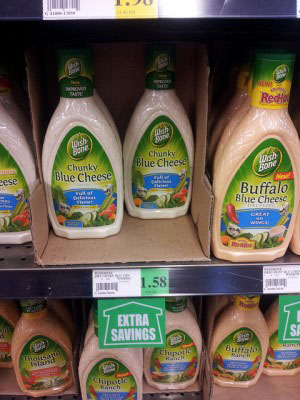 “I don’t buy large amounts, even if it’s a better deal.”
“I don’t buy large amounts, even if it’s a better deal.”
With only two of us in my household, buying larger amounts of perishable items without a plan to use all of them ends up being just a waste of money and food. I take inventory on what I throw out when I clean out my fridge and cabinets, and then make sure to buy smaller portions of those items, even if it is not as cost effective. For instance, I used to buy large tubs of cottage cheese or sour cream because they were only $0.50 more than the smaller containers, but I would only use half before they went bad. I also had a bunch of salad dressings that would go bad before I could use them, so now I only buy one or two dressings at a time until I use them up and then I try a new one. I usually aim for the smaller bottle so I do not get sick of the dressing by the time I use it up. —Abby, Graphic Designer
That’s just the beginning. For more great food waste reduction tips, visit I Value Food.
RELATED ARTICLES
Quiz: How Much Food Do You Really Waste?
Cooking for One With Zero Waste
3 Recipes for Leftover Vegetables
Photos, top to bottom: Abby Lindstrom, rest via Flickr (Emily,
bionicgrrrl, Beatrice Murch, MudflapDC, Tobias Bjorkgren, Meg Stewart, Jessica and Lon Binder, Kevyn Jacobs
